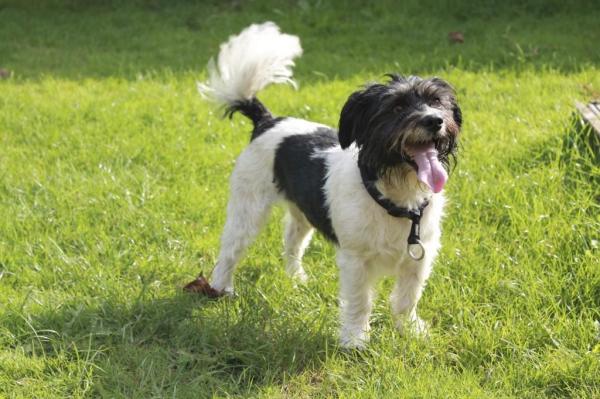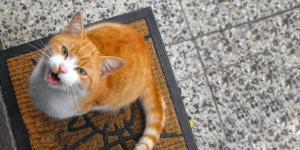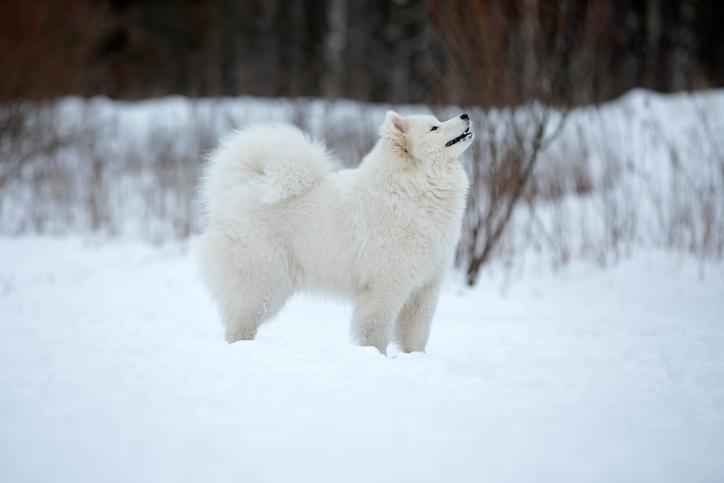Dog Tail Positions and What they Mean



See files for Dogs
What do dogs express with their tails? Are they simple movements or are they really part of their body language and communication? If you have always wanted to know more about the language of dogs, you cannot miss this AnimalWised article in which we show you all dog tail positions and what they mean.
Do not forget that these movements will always be accompanied by other forms of communication, such as vocalization or varying posture, fundamental to really understand what our best friend is trying to tell us.
Dog tail bone structure
The tail, or coccygeal region of the dog, is an extension of their vertebral column, formed mainly by the caudal vertebras and a distal bone. These are irregular bones that join together. This region can vary greatly from one race to another.
Do dogs feel their tail?
Many people wonder why it's bad to cut the ears or tail of a dog. The truth is that dogs do feel their tail and before a mutilation they will suffer pain. In addition, it's not only amputation that's a painful process, the post-operative is also very uncomfortable for the animal and can cause infections, among other problems.

Dog tail positions and what they mean
Now let's review the basic movements of the tail of the dog, along with its meaning and interpretation. Remember that all gestures are always going to be accompanied by other postures or forms of communication, something essential to be able to correctly interpret what they are feeling:
- Relaxed tail: when you notice that your dog does not wag their tail in any particular way, but is in a relaxed position, it means they are calm.
- Relaxed tail and slight movements: the dog is calm.
- Falling or drooping tail: usually this posture is accompanied by other signs, such as a shrunken body, drooping ears and a squatting body position. This posture expresses anxiety, fear, stress or discomfort. If your dog also licks, whines or hides, they are in a very uncomfortable situation.
- Fallen tail and with slight movements: the dog is nervous and uncomfortable, to the expectation of what can happen. They are undecided and not clear about the situation in which they are in.
- Tail between the legs: this posture will always be accompanied by other postures related to fear, like ears back, legs back, body hunched ... The dog is very afraid.
- Horizontal tail: this posture can be confused by others and you must be attentive to the other signals that the dog can transmit. It usually means the dog is alert to what may happen, but it can also be a careful greeting.
- Horizontal tail and with slight movements: can mean a greeting or nervousness.
- Horizontal tail and with ample movements: the dog is very alert and nervous, can be a greeting or an expression of uneasiness. Although usually due to an excitable greeting, at other times they can transmit much discomfort.
- High tail: the dog is very alert and self-confident, is on the lookout for what may happen and may react unexpectedly.
- Extensive tail movements, accompanied by hip movements: generally these type of movements are accompanied by signs of play or positive behaviors. They mean that the dog is happy and having fun.

It is not always easy to identify the dog language. Sometimes, even different tail movements can be confused with each other, however much experience a pet owner has. Therefore, knowing the dog and creating a bond with them is essential when it comes to wanting to communicate better.
Dogs with a curly tail (or coiled tail) are somewhat more complicated to interpret. However, nervous or quiet movements and other body signals can help you know what a dog's tail movements mean. Learning more about dog language and calm signals can be very helpful if you have a dog with a coiled tail or without a tail.

If you want to read similar articles to Dog Tail Positions and What they Mean, we recommend you visit our Facts about the animal kingdom category.








